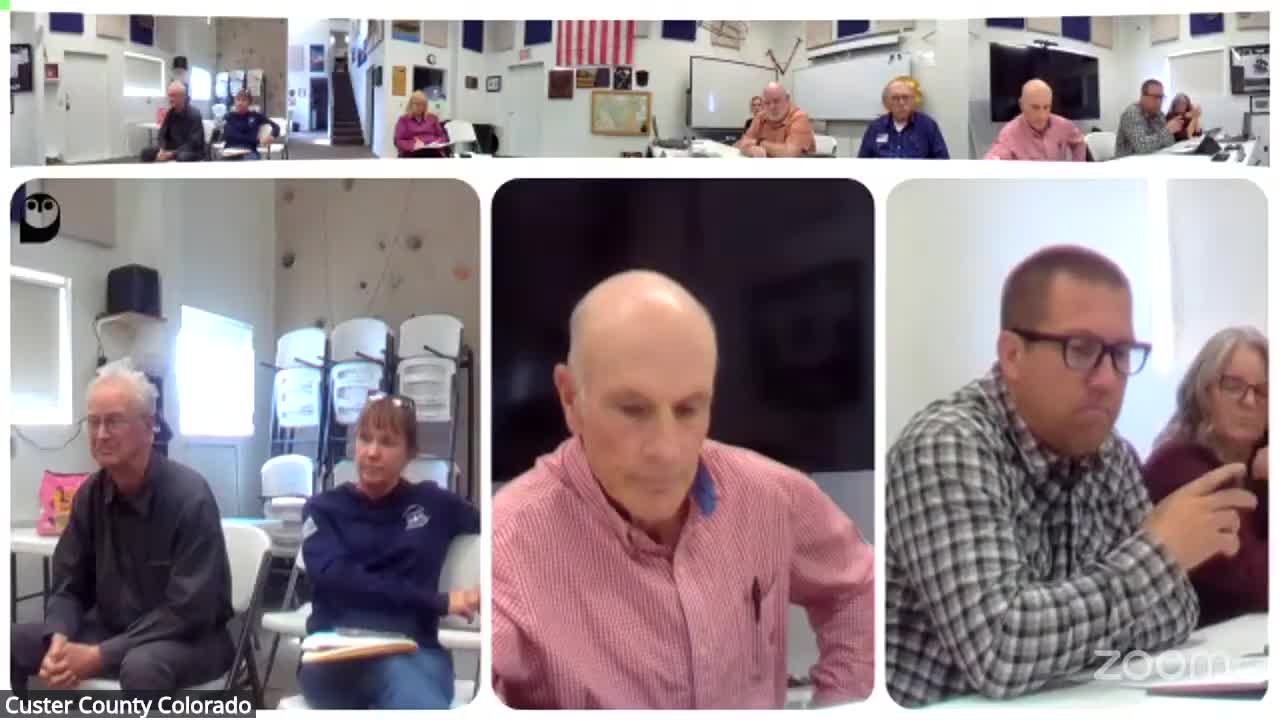Sheriff Advocates for Better Funding Strategy in Fire Mitigation Plans
September 30, 2025 | Custer County, Colorado
This article was created by AI summarizing key points discussed. AI makes mistakes, so for full details and context, please refer to the video of the full meeting. Please report any errors so we can fix them. Report an error »

In the heart of Custer County, a recent special meeting of the Board of County Commissioners (BOCC) illuminated pressing concerns surrounding emergency preparedness and resource allocation. As the sun dipped below the horizon, officials gathered to discuss strategies for enhancing search and rescue operations, alongside the broader implications of community wildfire protection plans (CWPP).
A key topic of discussion was the need for a more structured approach to managing funds earmarked for future building projects. One commissioner emphasized the importance of deciding whether to invest in a single large project or multiple smaller initiatives. This decision is critical, especially as the sheriff has consistently voiced concerns regarding the county's readiness for emergencies, particularly in light of recent wildfires.
The conversation shifted towards the necessity of regular meetings to refine the CWPP, which is vital for ensuring that the community is prepared for potential disasters. The commissioners recognized that educating residents about fire mitigation strategies is essential, as the safety of homes directly impacts the county's financial health. A recent fire in Tanglewood Acres served as a stark reminder of the risks faced by the community.
Questions arose about the inclusion of livestock evacuation in emergency plans, highlighting the multifaceted nature of disaster preparedness. One commissioner sought clarity on whether disaster funds could be accessed post-event, indicating a proactive approach to securing resources for future emergencies.
Reflecting on past meetings, officials acknowledged the importance of thorough studies to inform their strategies. The insights gained from previous discussions, particularly those led by experts like Butch Washington, were deemed invaluable in shaping the county's response to fire threats.
As the meeting concluded, the commissioners left with a renewed commitment to bolster Custer County's emergency preparedness, ensuring that both residents and their livestock are safeguarded against the unpredictable forces of nature. The path forward is clear: collaboration, education, and strategic planning will be essential in navigating the challenges that lie ahead.
A key topic of discussion was the need for a more structured approach to managing funds earmarked for future building projects. One commissioner emphasized the importance of deciding whether to invest in a single large project or multiple smaller initiatives. This decision is critical, especially as the sheriff has consistently voiced concerns regarding the county's readiness for emergencies, particularly in light of recent wildfires.
The conversation shifted towards the necessity of regular meetings to refine the CWPP, which is vital for ensuring that the community is prepared for potential disasters. The commissioners recognized that educating residents about fire mitigation strategies is essential, as the safety of homes directly impacts the county's financial health. A recent fire in Tanglewood Acres served as a stark reminder of the risks faced by the community.
Questions arose about the inclusion of livestock evacuation in emergency plans, highlighting the multifaceted nature of disaster preparedness. One commissioner sought clarity on whether disaster funds could be accessed post-event, indicating a proactive approach to securing resources for future emergencies.
Reflecting on past meetings, officials acknowledged the importance of thorough studies to inform their strategies. The insights gained from previous discussions, particularly those led by experts like Butch Washington, were deemed invaluable in shaping the county's response to fire threats.
As the meeting concluded, the commissioners left with a renewed commitment to bolster Custer County's emergency preparedness, ensuring that both residents and their livestock are safeguarded against the unpredictable forces of nature. The path forward is clear: collaboration, education, and strategic planning will be essential in navigating the challenges that lie ahead.
View full meeting
This article is based on a recent meeting—watch the full video and explore the complete transcript for deeper insights into the discussion.
View full meeting
